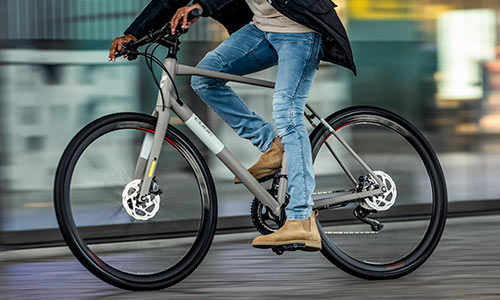
The seat is also relevant, because longer tours should not be at the expense of comfort. Since the aim with a fitness bike is to do regular, frequent training sessions, it is advisable to pay close attention to the crucial components and also to how the bike rides. In addition, you should know your own physical condition well so as not to under- or overstrain yourself. In addition to a perfectly tuned bike, a well-thought-out fitness plan, individually tailored to your fitness level and your goals, is helpful.

What should you look out for?
- When riding, your back must remain straight
- Look for lightweight materials, such as aluminum
- Make sure you have narrow tires to keep rolling resistance as low as possible
- Your individual ergonomic requirements must determine the size of your bike and its components. The decisive factors here are your inseam, arm and torso length and height. Measure yourself and then seek advice
- Make sure you have the optimal saddle height to prevent muscle pain and to make your riding experience as pleasant as possible. This is the only way to get the best out of yourself
By the way: Your pulse should be between 120-140 during training – perfect for burning fat
The features of your fitness bike leave nothing to be desired. For example, you can choose between narrow or better profiled tires, depending on your preferred routes, which even allows you to train on gravel roads. At the same time, the choice of suspension fork, brake and wheel also determines the terrain on which you can best train with your fitness bike.



